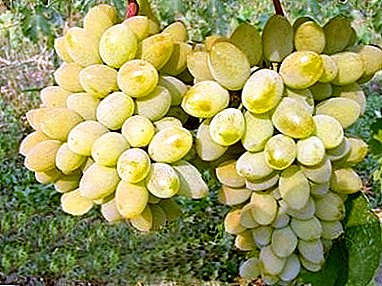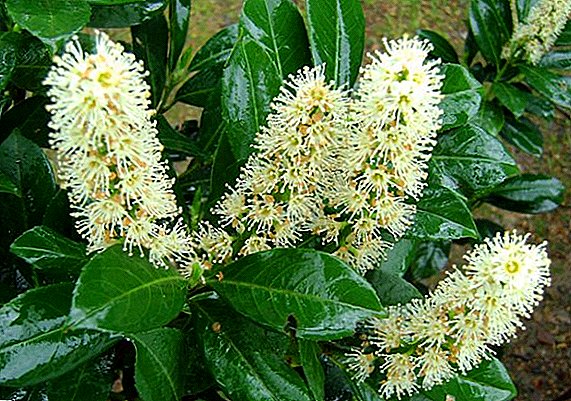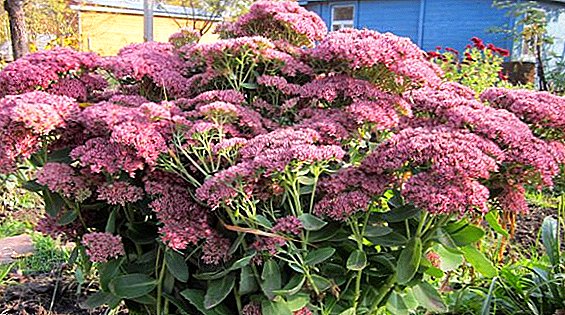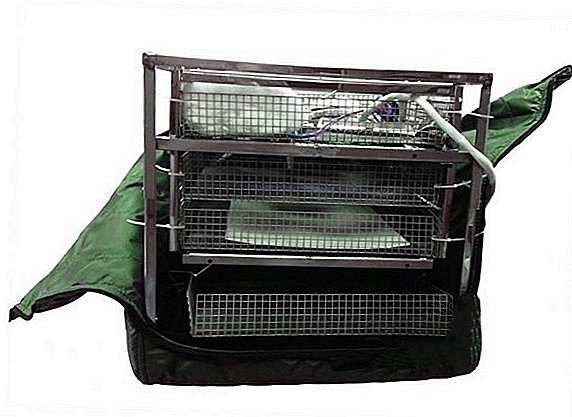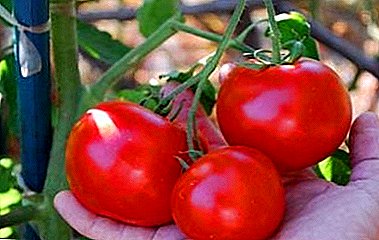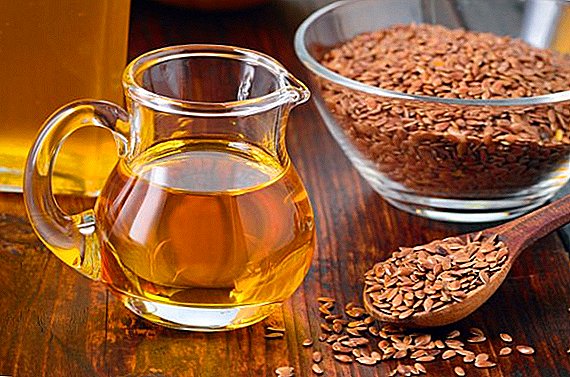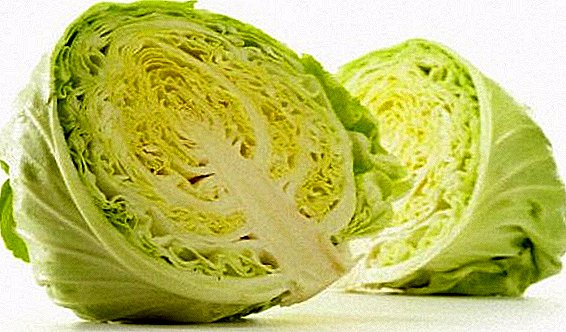 Cossack juniper is a rather unpretentious and widespread representative of its kind.
Cossack juniper is a rather unpretentious and widespread representative of its kind.
Looks good at any time of the year, does not change its decoration even in winter.
Often decorates hedges, both independently and in conjunction with other plants.
Description and popular varieties
You should read the description to have a general idea of this plant. Cossack juniper is a type of creeping coniferous trees or shrubs. It grows in height from 1 to 3 m. The branches have an unusual dark green color, rather thick and quickly rooting. The shoots of the plant are poisonous and contain essential oil. 
Familiarize yourself with such types of juniper as Chinese, Blue Herrow, Blue Star, Colonic, Siberian, Horizontal, Virginia, Skyrocket.
The most popular varieties of Cossack juniper are:
- "Glauca" - shrub about 1 m high and 2 m wide. The needles are beautiful gray-blue, and the crown has the shape of a pillow. Cones - black-brown color with a bluish bloom.
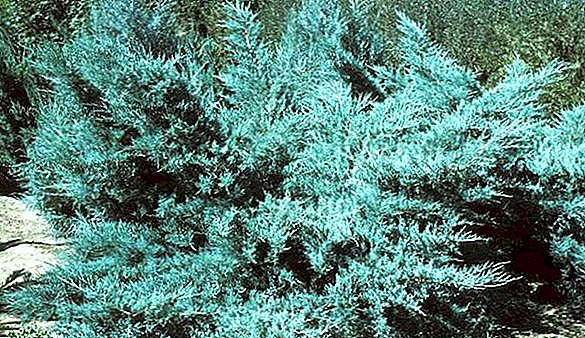
- "Tamariscifolia" - a rather unusual shrub whose branches are spread out in all directions. It reaches a height of 0.5 m, and in width - about 2 m. Needles can be of different colors - from green-blue to light green. Unpretentious to the condition of the soil and moisture.
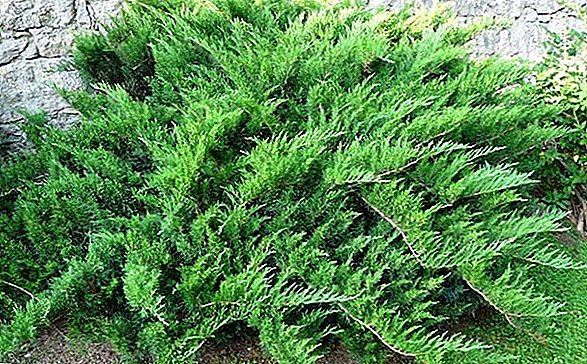
- "Arcadia" - low plant with soft needles of green color. The width of this variety is as much as 2.5 m, and its height is up to 0.5 m. It easily covers large areas as it grows, forming a beautiful carpet.
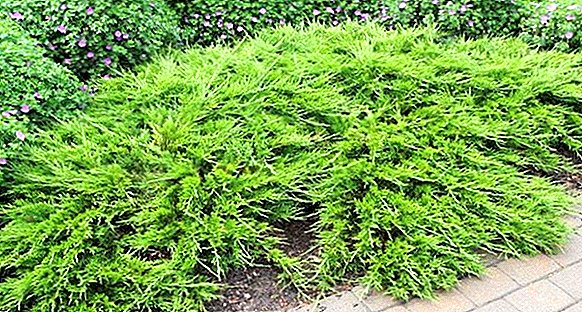
Did you know? In Ancient Rus, they made dishes from juniper, in which milk did not turn sour even on a summer day.
How to plant juniper
This shrub is best to start planting in the open ground in the spring. For this you need to know how to choose the right place and soil for growing plants.
Learn the secrets of planting and caring for juniper.
Choosing a place
The most important requirement for the place of growing plants is dry soil and good illumination.
So, there should not be standing ground water near, and sunlight should constantly fall on the plant.
Growing soil
Before you plant a Cossack juniper, you should prepare the ground. It is necessary to dig a hole (about 2 times more than the roots themselves) and put drainage into it (for example, stones or sand).
Important! If the soil is acidic, dolomite flour or fluff lime must be added without fail.

There are no special requirements for soil acidity in the Cossack juniper, but the most optimal will be the soil with a reaction of about 7 (that is, neutral). The plant does not require special fertility: suitable and humus-poor, rocky soil. Therefore, it is desirable not to grow it on fat soils, because there is a risk of fungal diseases.
Read also about which juniper varieties are suitable for your home and how to care for them.
Technology landing Cossack juniper
The soil should be loosened and the roots of the plant should be placed in a hole, spreading them horizontally and sprinkling a large amount of sand.  You should leave a small depression in order to prevent water from flowing out.
You should leave a small depression in order to prevent water from flowing out.
After planting, it is necessary to water the plant abundantly and cover it from direct sunlight. The distance between seedlings should be from 0.5 to 2 m. If the garden is small, it is better to choose a compact view of juniper. Mulching pits can be made stones, crushed bark or sawdust (at your discretion).
This is necessary to retain moisture, normalize temperature and protect against weeds.
How to care for a plant
Cossack juniper requires not only proper planting, but also proper care. The plant is unpretentious and care for him is simple, but requires regularity.
Did you know? Often with the help of juniper give a pleasant smell to juices, compotes and fruit drinks.
Watering and spraying
Careful watering is especially needed on hot dry days. Spraying the crown very well affects the condition of the plant and its appearance. 
This procedure should be carried out in the evening, at least once a week.. It is necessary to make the bark of the branches wetted, and then the Cossack juniper will show its true beauty.
Fertilizer and dressing
It is necessary to fertilize only young plants, because adults do not need additional feeding. It will be useful to make the mineral complex in low concentrations.
This should be done in the spring, after the snow melted. So, you need to make a nitroammofosku (30 g per 1 sq. M of the root zone).
Important! Be careful with organic nitrogen fertilizers: they are better not to feed the plant, because there is a risk of deformation of the decorative crown of junipers.
Pruning
Pruning juniper Cossack is not required, but if you decide on it, you should start when the plant will be at least 2 years. You should cut dry and damaged branches with scissors or a special pruner. 
This procedure is carried out twice a year.: in April and September (however, the average daily temperature on this day should be at least 4 ° C). It is necessary to do this with gloves in order to protect your hands from toxic substances and dirt.
Juniper has not only decorative, but also healing properties for our body.
How do junipers Cossack breed
There are three methods of breeding Cossack juniper: using cuttings, seeds and layering.
- Seeds. Before you multiply the plant using this method, you need to prepare everything you need. It is necessary to choose boxes for stratification (keeping seeds for some time under certain conditions for their rapid ripening). There are plants of the female, on which there are cones. Each cone contains several seeds. The latter must be removed and soaked in acid solution for half an hour, then washed with water. As soon as the first snow appears, the seeds should be planted in the ground in boxes that were prepared in advance. In this state, they should be left for the winter, and landed in open soil in early spring. If juniper seeds did not undergo stratification, they will grow only a year later.
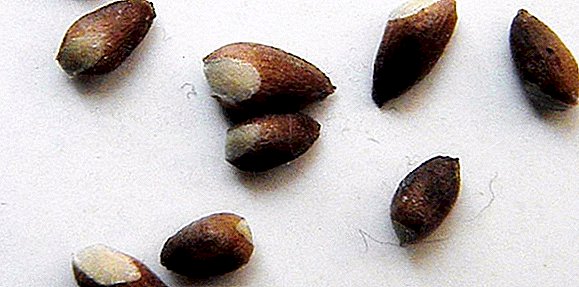
- Cuttings. This type of breeding is recommended only in April or August. They should be transplanted in open ground in cloudy weather, because the scorching sun can negatively affect the condition of the future plant. Cuttings should be cut along with a piece of old bark 10-15 cm long and placed in water. Roots should be immersed in the ground to a depth of 5-7 cm. Thus, they will take root for about 3 months. All this time they should be carefully watered and sprayed. If direct sunlight falls on the cuttings, it is better to create a shadow for them.
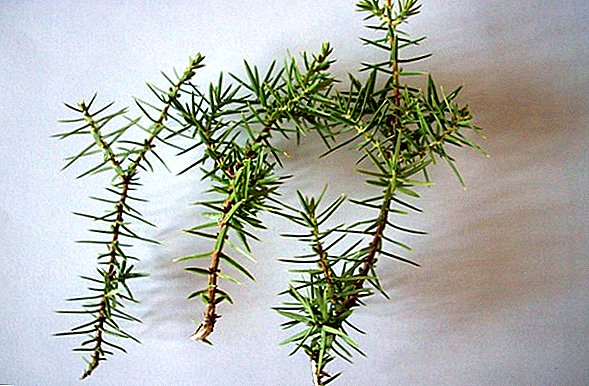
- Layering. You need to take a young twig during the growing season and make a small incision on it. It should be powdered with a special powder for rooting. This twig must be tilted to the ground and sprinkled with earth to strengthen. The roots on the layers will appear for six months. After their appearance, the cuttings need to be cut with a pruner and planted in the hole.
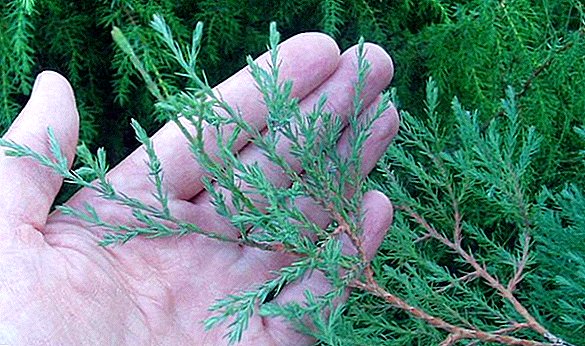
Possible diseases and pests
The most common juniper disease - it is rust caused by the fungus Gymnosporangium. He also lives on a pear, so the neighborhood of a juniper with her is not the best option. It is easy to understand that the plant is sick with rust: it looks like small red spots of 0.5 cm in length. Such a raid spreads everywhere - on cones, needles and branches.
Important! Recognizing the disease, you should immediately get rid of the shoots, so that spores do not infect other plants.
To cure juniper Cossack, it is enough to treat it at the end of summer with fungicides.
As a result, we can say that the Cossack juniper is the perfect decoration of the hedge. The care is unpretentious and looks presentable all year round, which can be seen in this photo.









